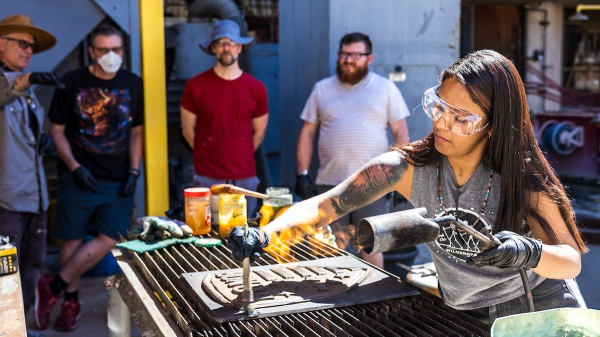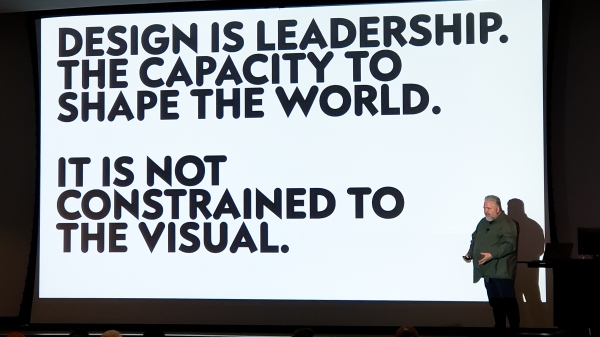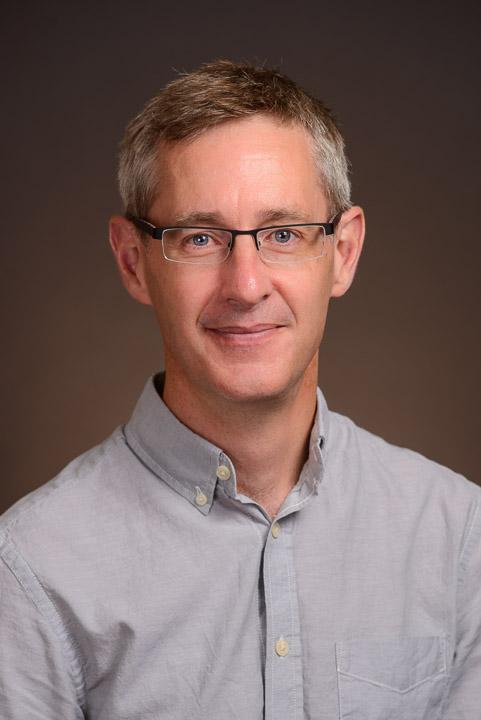Q&A: ASU professor invites us to imagine a world without classical music
Future of classical music is 'million-dollar question,' but ASU poised to answer with hundreds of concerts, recitals

ASU School of Music Professor Roger Mantie
The future of classical music is anyone’s guess, but Arizona State University Professor Roger Mantie invites us to consider a world without it.
“Imagine movies or video games without their classical music backgrounds,” Mantie said. “Star Wars without the John Williams soundtrack? Unthinkable!”
ASU plays host to around 700 classical recitals in its concert halls each year, with students and visiting musicians delivering performances free and open to the public where they expand their creativity and hone their craft.
To learn more, ASU Now reached out to Mantie, who teaches in the School of Music in the Herberger Institute of Art and Design and has performed professionally as both a jazz and classical saxophonist:
Question: What makes classical music so important in today's society?
A: That’s a really loaded question. Every kind of music is important to those who love their music — i.e., pretty much everyone. In that sense, I don’t think we can say that classical music, or more precisely, Western classical music, is any more or less important than any other kind of music. In some senses, classical music is and always has been a “niche” art form, but to describe it only in terms of its popularity misses the point.
If we try to imagine a world without classical music, I think we can begin to have an idea of just how embedded it is in Western culture. Imagine movies or video games without their classical music backgrounds, for example. Star Wars without the John Williams soundtrack? Unthinkable! What kind of an impoverished world would we be living in without our concert halls, symphony orchestras, opera companies and so on?
Classical music isn't important because it is “better” than other musics, which it isn’t, but because of what it represents: a very special form of human engagement that tests the limits of the human imagination and possibility, both in terms of its performative and aesthetic aspects.
Q: What about those performative and aesthetic aspects do you find so intriguing?
A: There are all sorts of historically-derived norms and practices having to do with enculturation, training, relationships between musicians and audiences, formal reflexivity in the musical material and so on. These are not unique to classical music per se, but classical music’s heritage is vast and rich. I’m personally less interested in “preserving” these things (the “museum of musical works”) than in continuing to innovate and engage in the spirit of community and belonging.
Q: ASU often hosts student recitals at the school's concert hall. Can you explain what exactly those are?
A: With up to five stages regularly in use, the School of Music presents around 700 concerts and recitals per year. Some of these are by larger ensembles, but the vast majority are by individual students (undergraduate and graduate) as part of their degree program. Most music students typically have to perform at least one solo recital, i.e., a performance of usually 30–90 minutes, made of several musical works they have studied during the year.
As one of many “best kept secrets” at ASU, these are free and open to the public. The quality is very high, often comparable to what you might hear on professional stages — keeping in mind that many School of Music students already perform professionally. Anyone could go to the School of Music almost any night of the week during the academic year and find some sort of performance to attend.
Q: What do you see the future of classical music looking like?
A: This is the million-dollar question in the classical music world right now. People with a vested interest in classical music, notably classical musicians themselves, have been asking questions about the future for quite some time. The question has become increasingly pressing due, in part, to the collapse of revenue streams from recorded music in the 21st century, something that has affected all working musicians regardless of genre.
The broader question, however, speaks not to popularity — arguably classical music has never really been “popular” in the broad sense — but to the vitality of any given musical practice. My personal opinion is that classical musicians in the 20th century were caught in a dilemma: what people wanted to hear were things like Schumann piano sonatas, Verdi operas, Beethoven string quartets, or Mozart symphonies, not “new” music. As a result, classical music stopped being a living, breathing art form.
The silver lining, as I see it, is that classical musicians in the 21st century are being more creative than ever. There are so many exciting things going on in the classical music world right now. My prediction is that the musical landscape of the 21st century will be defined by how it reinvented musical engagement of all types.
Q: Have you always been immersed in classical music? What first drew you to the genre?
A: I learned to play the saxophone through the school band program. I grew up playing all sorts of music and didn’t really privilege one kind over the other. That’s something I try to promote with my own children. We listen to and play every style of music we can.
Most university music programs are based on the Western classical tradition. As a result, I was fully immersed in classical music. I often wonder if I would have loved classical music as much as I do if I were not so thoroughly immersed in it.
Find upcoming recitals on the ASU Events website at http://bit.ly/2nEXHah. And don't forget to check in at these and other events with Sun Devil Rewards, a free app that connects users to everything ASU. Earn "Pitchforks" for reading ASU news stories, checking in at events, taking polls, playing trivia games and more — and earn prizes that money can't buy (only Pitchforks can!).
More Arts, humanities and education

'Devils in the Metal': ASU vet leads iron cast workshop for former service members
Bruce Ward believes everyone has a symbol of strength or resilience, and they have an obligation to find it. His happens to be a paper crane in an ocean wave. “It’s the idea that we are the…

ASU English professor wins Guggenheim Fellowship for poetry
The awards — and opportunities — keep piling up for Safiya Sinclair, an associate professor in Arizona State University’s Department of English. In mid-April, Sinclair received one of 188 Guggenheim…

Designer behind ASU’s brand named newest Herberger Institute Professor
Bruce Mau, co-founder and CEO of the Chicago-based holistic design consultancy Massive Change Network, has joined Arizona State University’s Herberger Institute for Design and the Arts as its newest…
